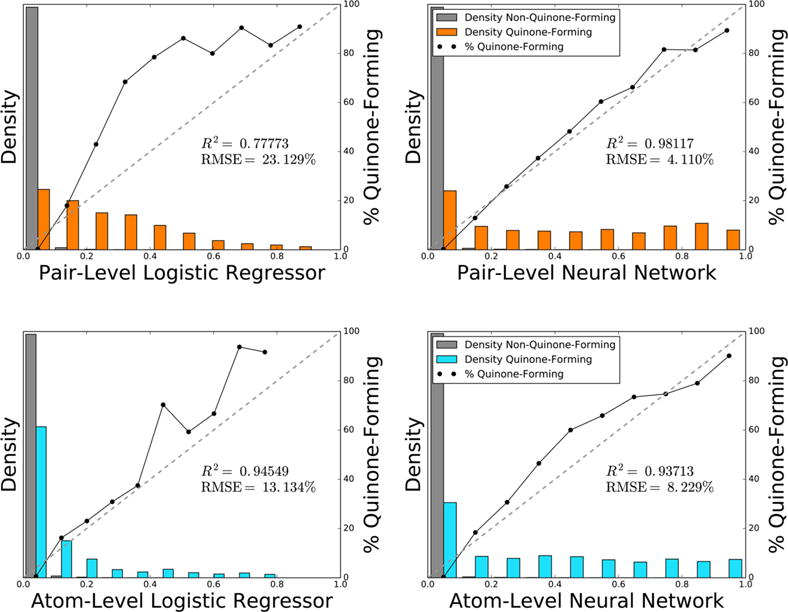Figure 5.

Pair-level neural network computes the best scaled prediction of quinone-forming pairs and corresponds closely with a probability. Across 78341 atom pairs within 718 quinone-forming and nonquinone-forming molecules, the bar graphs plot the normalized distributions of the pair-level logistic regressor, the pair-level neural network, the atom-level logistic regressor, and the atom-level neural network. Using non-normalized frequencies, the solid lines in each bin plot the percentage of atom pairs that form quinones. Atom-level scores were mapped to the pair-level by multiplying the scores of both atoms together. On the pair-level, the logistic regressor and the neural network used the outputs of the atom-level neural network as inputs, along with pair-level descriptors. Each diagonal dashed line indicates a hypothetical perfectly scaled prediction. Of the four methods, the pair-level neural network provided the best scaled prediction, with the lowest root-mean-square error of a perfectly scaled prediction, and the highest correlation to the best-fit line. Therefore, the pair-level neural network most accurately reflected the probability that an atom pair will form a quinone.
